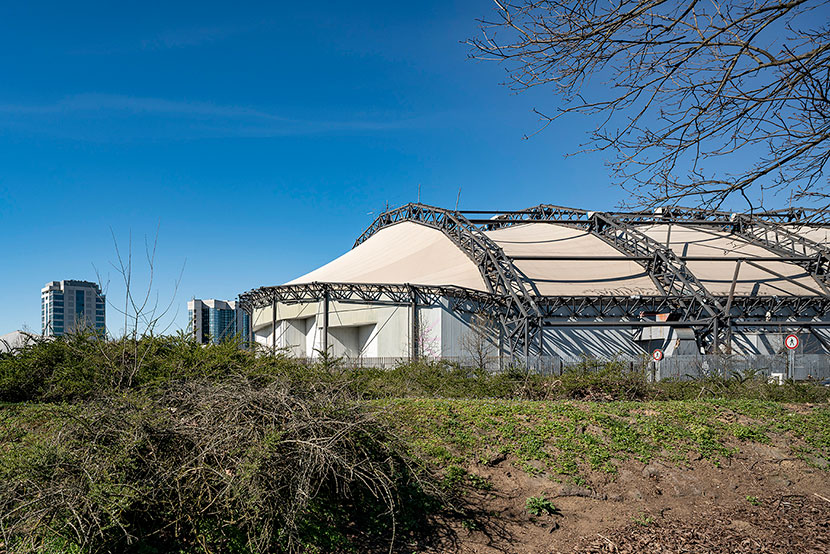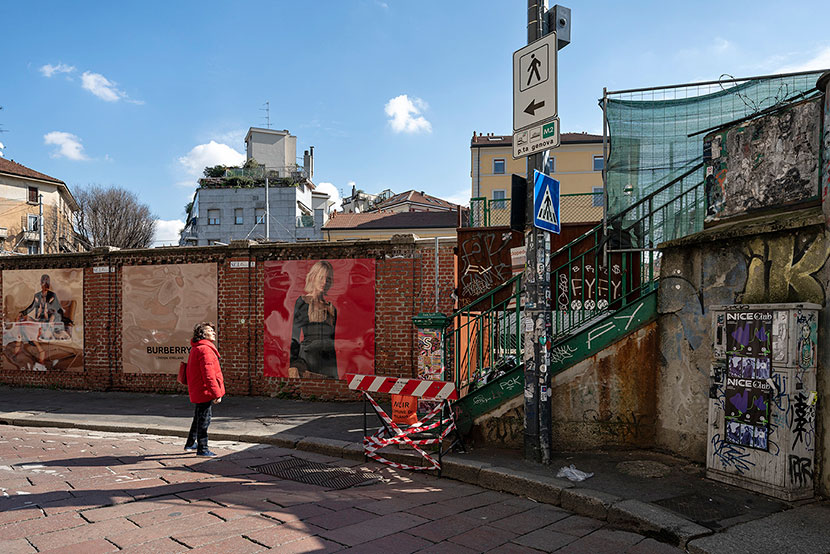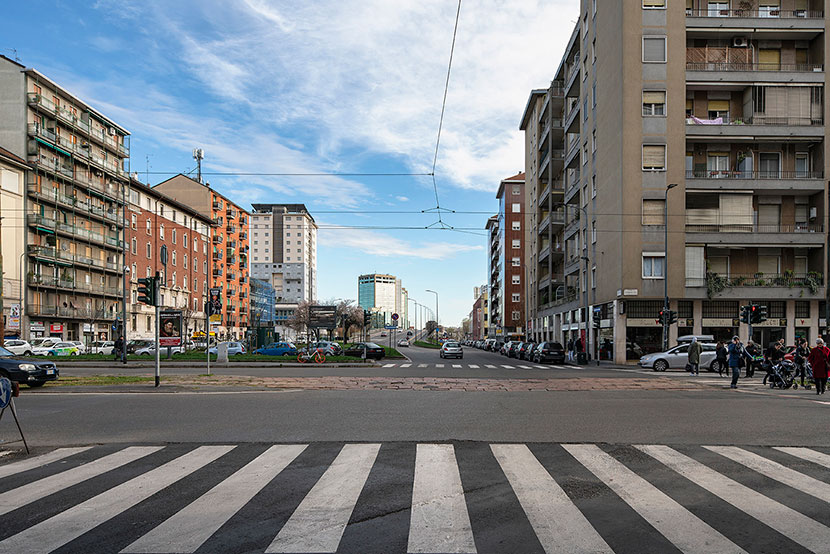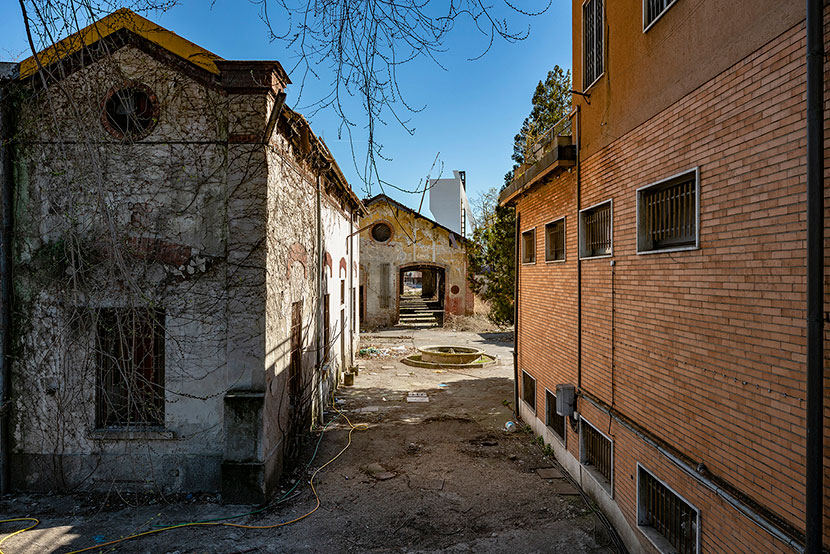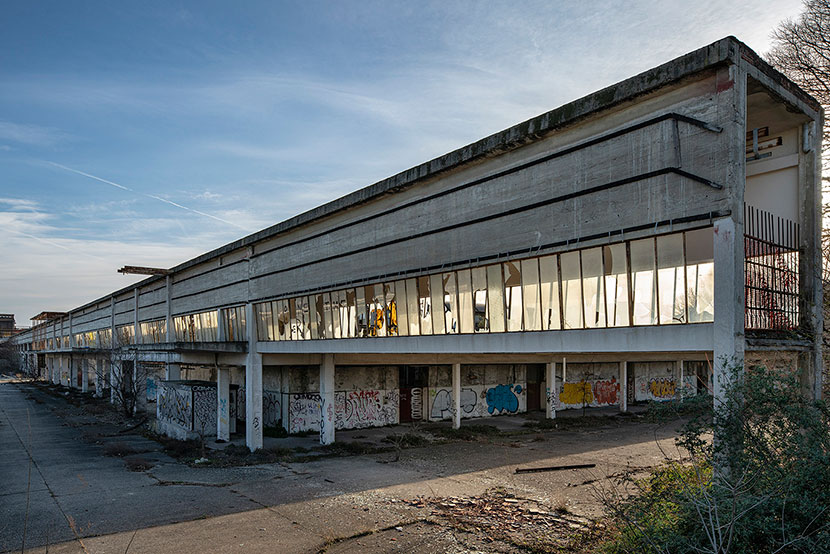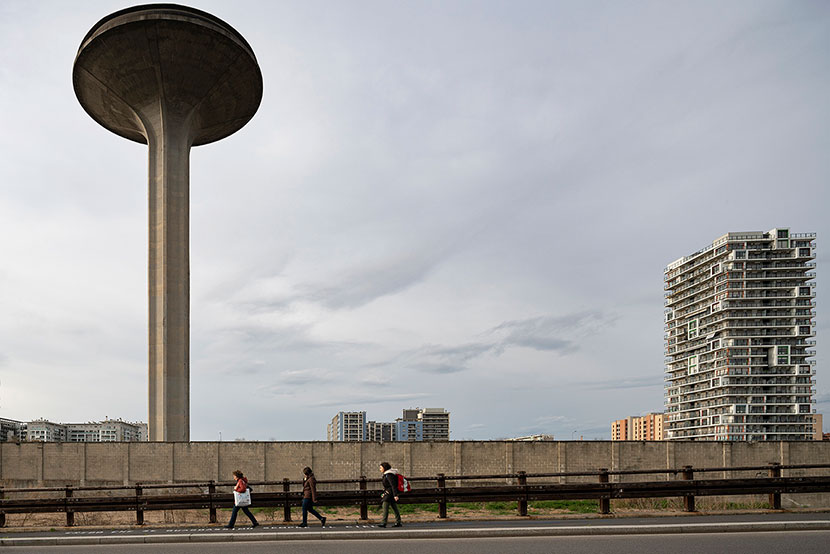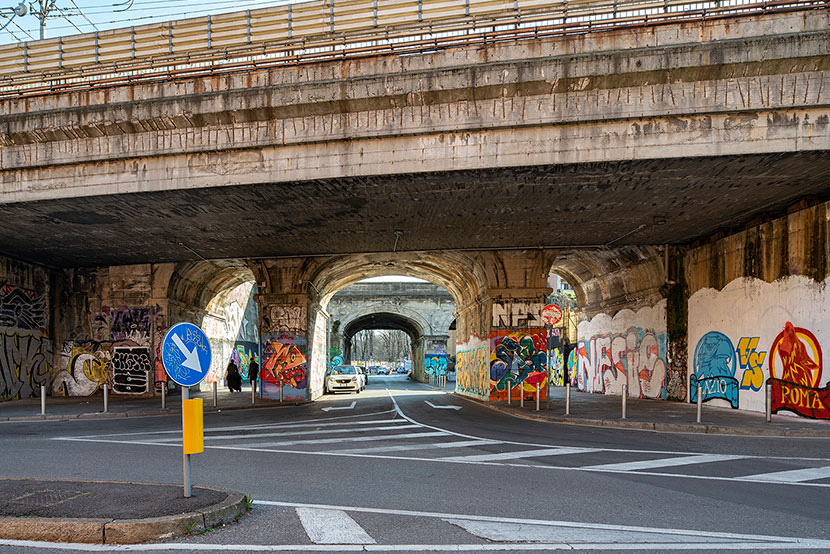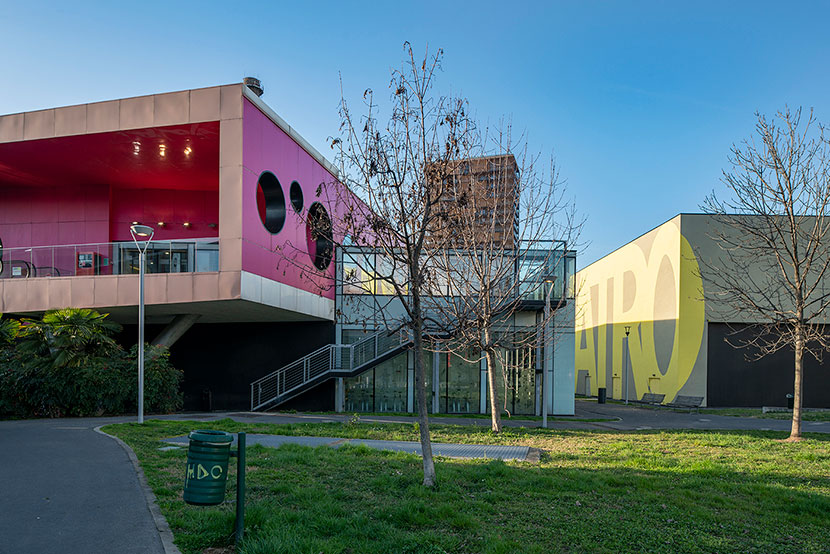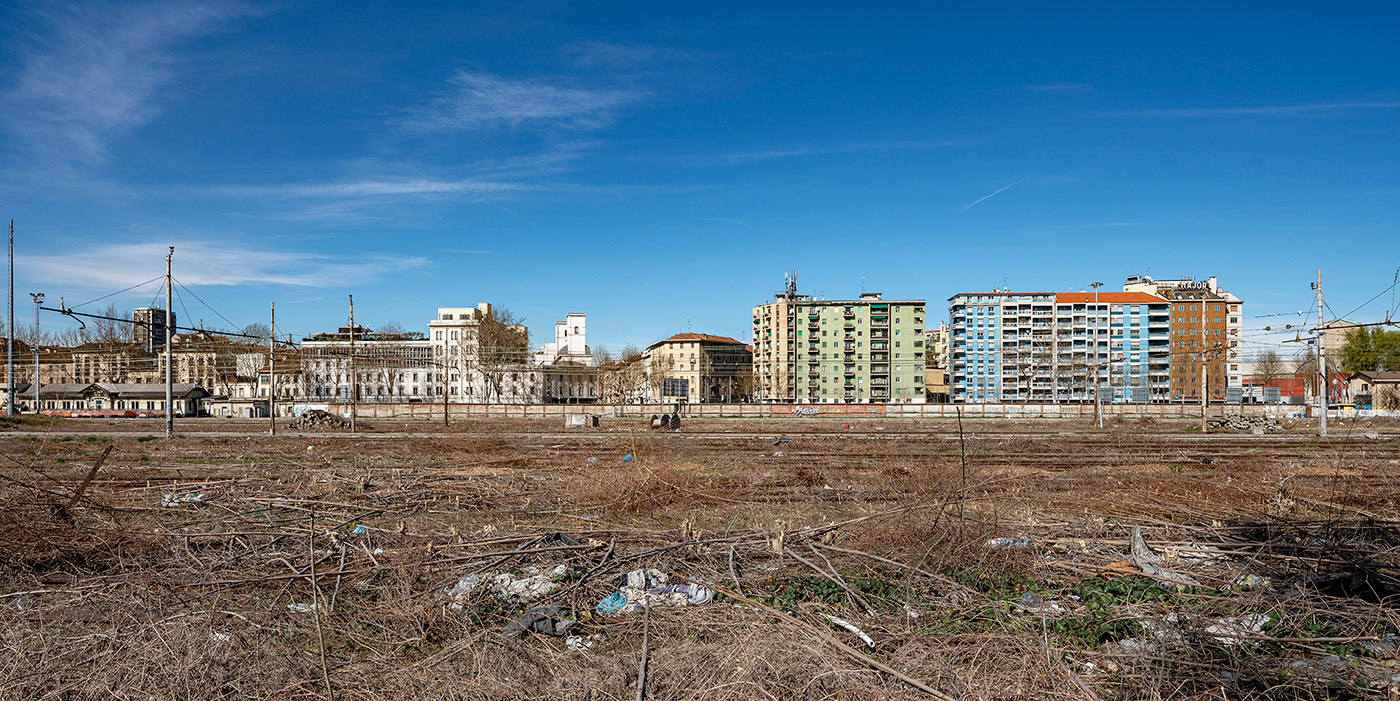
These photographs were taken in the spring of 2019, having had a request for images of eight neighborhoods from STYLE magazine for a special on Milan.
I have photographed many areas in the process of change, some are also the subject of experimental urban projects, but in general I have shown what the neighborhood is, by relating roads, buildings, public places, different realities in contrast, and also highlighting areas with pre-existing buildings in pending redevelopment (for example the buildings in the Porta Vittoria area, the Polytechnic Studentate in the Corvetto district, the Sharp Palace, or the municipal covered market at QT8).
Furthermore, the presence of large disused spaces within the city, such as the Porta Romana railway station but not only, represent great opportunities for urban development and redevelopment.
Private interventions, such as the Prada Foundation in the large Corvetto district or the Armani Silos in the Porta Genova area, together with the creation of public spaces, such as the Adriano Olivetti square behind the Porta Romana airport, or the creation of experimental pedestrian squares of the District Plan of the Municipality, as in the Dergano-Maciachini district, are some of the evidences that I told in the images.
And it is precisely the public spaces that are the protagonists of the photographs of the neighborhood that develops around the long and narrow Via Padova, which in its initial part fits into a very dense urban fabric, and then finds an escape from the congested neighborhood in the Park Trotter, a real relief valve in this part of Via Padova: it is easy to find people of all ages and social classes on weekends, or in afternoons after school.
Continuing north you enter the Martesana Park, an expanse of greenery, water, gentle hills, the amphitheater and the Naviglio, it doesn’t even seem to be in Milan anymore.
The Adriano district, wedged between Sesto San Giovanni and Cologno Monzese, neighboring municipalities of the Milanese hinterland, is also an important example within the process of reconversion of Milanese industrial areas, but still has a high number of unfinished spaces, large areas in awaiting transformation and construction sites with uncertain fate. The photos I took there refer precisely to the area of the new neighborhood, which develops around a large green heart dedicated to the memory of Franca Rame, the Italian actress recently passed away, and partially completed.
Green areas, in particular in their relationship between the city and the agricultural belt in the opposite area, to the south, are an interesting theme which in the
Corvetto district sees the numerous farmhouses, pre-existence of the surrounding agricultural space, come with time absorbed by the built along the urban border. The farmhouses, therefore, on one side are an important historical heritage to be protected, but at the same time they offer significant opportunities for socio-territorial reuse and redevelopment, as in the example of Cascina Nosedo, which borders the Parco della Vettabbia, where a cycle-pedestrian path it is articulated in the surrounding rural areas, rediscovering the natural potential linked to innovative agricultural production and sports and tourism activities.
Finally, returning to the theme of railway yards and green areas, as well as the waterways that run through Milan, along the Naviglio Grande, in Lorenteggio, there are numerous spontaneous gardens of pensioners, seen as places that the inhabitants of Milan try to recover and to redevelop by creating new opportunities for relationships, in harmony with the phenomena of urban awareness.
Queste fotografie sono state fatte nella primavera del 2019, avendo avuto una richiesta di immagini di otto quartieri da parte della rivista STYLE per uno speciale su Milano.
Ho fotografato molte zone in fase di trasformazione, alcune sono anche oggetto di progetti urbanistici sperimentali, ma in generale ho mostrato quello che è il quartiere, mettendo in relazione strade, edifici, luoghi pubblici, realtà diverse in contrapposizione, ed evidenziando anche aree dove alcune preesistenze sono in un immobile attesa di riqualificazione (ad esempio gli edifici alla Ex Stazione di Porta Vittoria, lo Studentato del Politecnico al Corvetto, il Pala Sharp o il mercato comunale coperto al QT8).
Inoltre la presenza di grandi spazi dismessi all’interno della città, come lo scalo ferroviario di Porta Romana ma non solo, rappresentano delle grandi opportunità di sviluppo e riqualificazione urbana. Gli interventi privati, come la Fondazione Prada nel grande quartiere Corvetto o il Silos di Armani in zona Porta Genova, unitamente alla creazione di spazi di fruizione pubblica, come la Piazza Adriano Olivetti dietro allo scalo di Porta Romana, o la creazione di piazze pedonali sperimentali del Piano Quartieri del Comune, come nel quartiere Dergano-Maciachini, sono alcune delle evidenze che ho raccontato nelle immagini.
E sono proprio gli spazi pubblici che sono protagonisti delle fotografie del quartiere che si sviluppa attorno alla lunga e stretta via Padova, che nella sua parte iniziale si inserisce in un tessuto urbano molto denso, per poi trovare una via di fuga dal quartiere congestionato nel Parco Trotter, una vera valvola di sfogo di questa parte di via Padova: è facile trovare gente di ogni età e ceto sociale nei week end, o nei pomeriggi dopo la scuola.
Proseguendo verso nord si entra al Parco della Martesana, una distesa di verde, acqua, dolci collinette, l’anfiteatro e il Naviglio, non sembra neanche di essere più a Milano.
Anche il quartiere Adriano, incuneato tra Sesto San Giovanni e Cologno Monzese, è un esempio importante all’interno del processo di riconversione delle aree industriali milanesi, ma tuttora presenta un alto numero di spazi incompiuti, grandi aree in attesa di trasformazione e cantieri con destino incerto. Le foto che ho fatto lì si riferiscono proprio all’area del nuovo quartiere, che si sviluppa intorno a un grande cuore verde dedicato alla memoria di Franca Rame, e parzialmente completato.
Le aree verdi, in particolare nel loro rapporto tra la città e la fascia agricola nella zona opposta, a sud, sono un tema interessante che nel
quartiere Corvetto vede le numerose cascine, preesistenza dello spazio agricolo circostante, venire col tempo assorbite dal costruito lungo il confine urbano. Le cascine quindi da un lato sono un importante patrimonio storico da tutelare, ma allo stesso tempo offrono notevoli occasioni di riuso e riqualificazione socio-territoriale, come nell’esempio della Cascina Nosedo, che lambisce il Parco della Vettabbia, dove un percorso ciclo-pedonale si articola nei circostantispazi rurali, riscoprendo il naturale potenziale legato alla produzione agricola innovativa e all’attività sportivo-turistica.
Infine, tornando al tema degli scali ferroviari e delle aree verdi, nonché ai corsi d’acqua che solcano Milano, lungo il Naviglio Grande, al Lorenteggio, ci sono numerosi orti spontanei di pensionati, visti come luoghi che gli abitanti di Milano provano a recuperare e a riqualificare creando nuove occasioni di relazione, in sintonia con i fenomeni di consapevolezza urbana.

